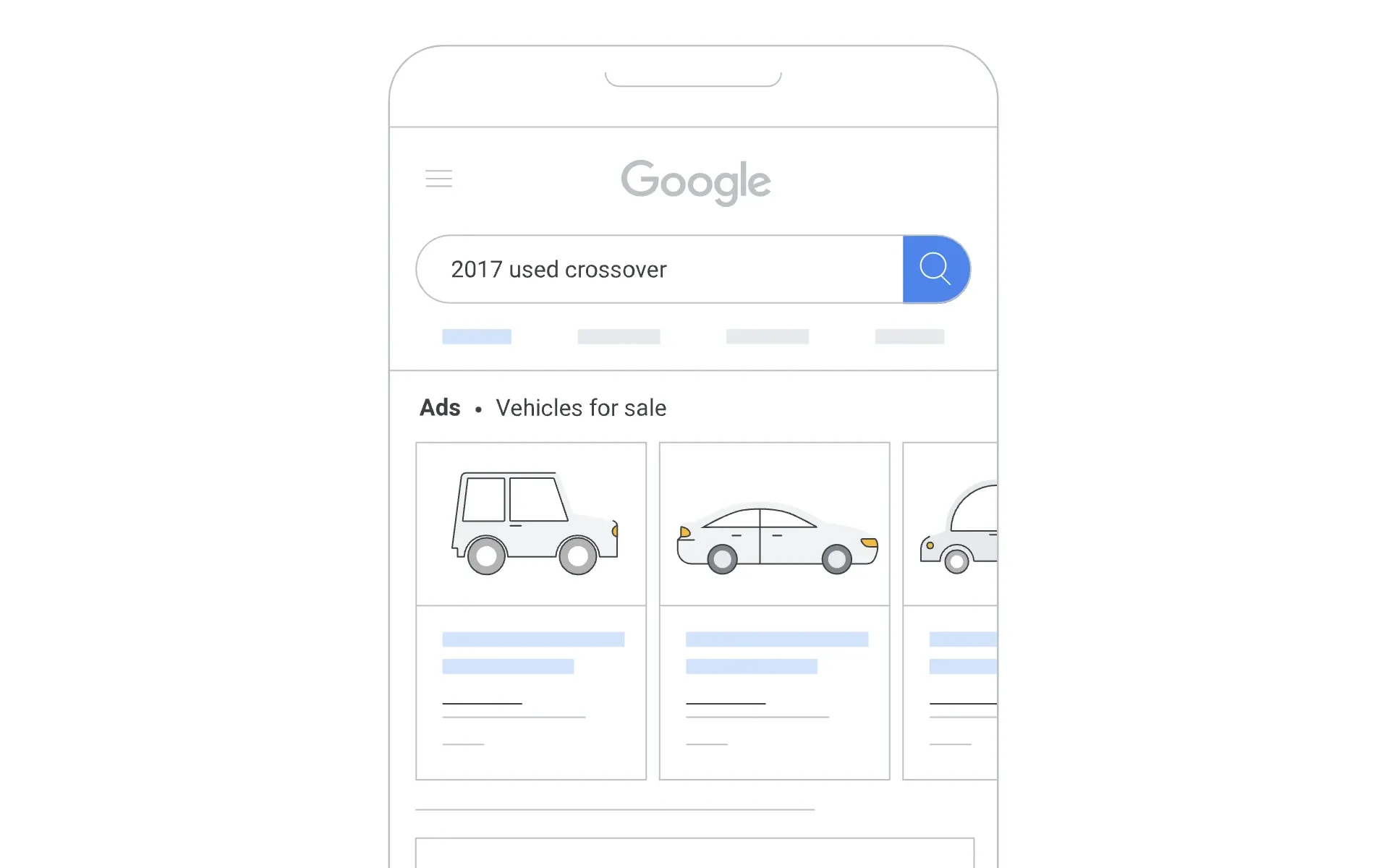Google Merchant Center adds vehicle registration date field for European markets
New mandatory date attribute helps dealers list used vehicles in Germany, France, Italy and Spain on Google Merchant Center.

According to Google Merchant Center's latest documentation released on January, 2025, dealers selling used vehicles in key European markets must now include the first registration date of their vehicles. The new attribute, called "date_first_registered," becomes a mandatory field for dealers operating in France, Italy, Spain, and Germany.
The technical specifications, detailed in Google's product documentation, require dealers to submit the registration date in a YYYY-MM format. For instance, a vehicle first registered in July 2020 should be formatted as "2020-07" in the product feed. This standardization ensures consistent data processing across different markets and platforms.
Google Merchant Center's documentation states that the attribute "is used to indicate the date of first registration of the vehicle with the respective public authorities." The implementation affects the vehicle ads data structure, joining other mandatory attributes such as the Vehicle Identification Number (VIN) and store code.
For markets outside these four European countries, the date_first_registered attribute remains optional. However, dealers can still include this information to provide additional transparency about their vehicle inventory.
The technical implementation requires specific formatting in different file types. According to the documentation, dealers using text or tab-delimited files must include the date in the YYYY-MM format. For XML feeds, the attribute should be enclosed in specific tags: <g:date_first_registered>2020-07</g:date_first_registered>.
The addition of this new field accompanies other vehicle-specific attributes in Google Merchant Center's data structure. These include mandatory fields such as the model year, mileage, and vehicle MSRP for new cars. The system also supports optional attributes like body style, engine type, and vehicle options.
For dealers utilizing the Content API for data submission, Google has updated its vehicle ads Content API guidelines to include the new attribute. The API specifications maintain the same date format requirements as the feed-based submission method.
Google's documentation emphasizes the importance of accurate data submission. Failure to include the registration date for used vehicles in the specified markets will result in product disapproval within the Merchant Center account. This enforcement mechanism ensures compliance with the new requirements while maintaining data quality standards.
The vehicle ads system integrates with other Google Merchant Center features, including the store code attribute that links inventory to specific dealership locations. This integration enables functionality such as local inventory ads and store-specific pricing.
Dealers working with Vehicle Feed Service Providers need to ensure their data feeds include this new attribute. The documentation indicates that feed providers must update their systems to accommodate the date_first_registered field, particularly for clients operating in the affected European markets.
The implementation timeline coincides with broader updates to Google's vehicle advertising platform, which includes specifications for various vehicle characteristics such as certified pre-owned status, fuel consumption data, and emissions standards. These technical requirements reflect the increasing complexity of vehicle data management in digital advertising platforms.
Dealers can verify the correct implementation of the new attribute through the Merchant Center interface, where product feed diagnostics will indicate any formatting issues or missing required fields. The system provides specific error messages when the date format does not match the required YYYY-MM structure.
The addition of the registration date field represents a significant technical update for vehicle inventory management systems, particularly affecting dealers and software providers operating in the European market. This change underscores the growing importance of standardized vehicle data in digital advertising platforms.
Google vehicle ads connect auto dealers with shoppers in search results
According to Google Merchant Center's documentation, vehicle ads represent a specialized advertising format that allows auto dealers to showcase their available inventory directly to consumers searching for vehicles on Google. These ads display when potential buyers conduct relevant vehicle-related searches, showing essential vehicle details including images, make, model, price, mileage, and dealer information.
The technical implementation operates through Google's Performance Max campaigns, which enable dealers to promote both new and used vehicle inventory from authorized sellers. When shoppers click on a vehicle ad, they navigate to that specific vehicle's description page on the dealer's website, where they can request more information, schedule test drives, or submit lead forms.
Google Merchant Center's specifications indicate that participation remains limited to authorized dealers, retailer stock, aggregators, and original equipment manufacturers. The platform specifically focuses on non-commercial passenger vehicles such as cars and pickup trucks, excluding recreational vehicles, commercial vehicles, farm equipment, motorcycles, boats, and other specialized transportation.
The system architecture requires dealers to maintain detailed inventory feeds in Google Merchant Center, containing comprehensive vehicle information that powers the ad displays. These feeds must adhere to specific technical requirements, including standardized formats for vehicle identification numbers, pricing structures, and various vehicle attributes.
For geographic availability, the documentation states that vehicle ads currently operate in open beta across the United States, Canada, Australia, and the United Kingdom. Dealers in European Economic Area countries must complete additional verification steps and meet specific prerequisites before gaining access to the program.
The platform's technology employs automated targeting mechanisms to match vehicle listings with relevant user searches. This automation extends to optimization capabilities, allowing dealers to focus on both online lead generation and physical dealership visits as conversion goals.
Implementation requires several technical integrations, including connections between Google Ads accounts, Merchant Center, and Google Business Profiles. The system mandates accurate business verification and proper website configuration to ensure seamless operation and optimal performance.
Dealers access comprehensive reporting features through the platform, enabling them to monitor key performance metrics and optimize their advertising strategies. The system includes quality control measures, requiring valid dealership licenses and adherence to specific policy guidelines to maintain platform integrity.
This advertising format reflects the automotive industry's increasing reliance on digital channels to connect with potential buyers, providing a structured way for dealers to present their inventory within Google's ecosystem while maintaining control over their digital presence and marketing investments.

